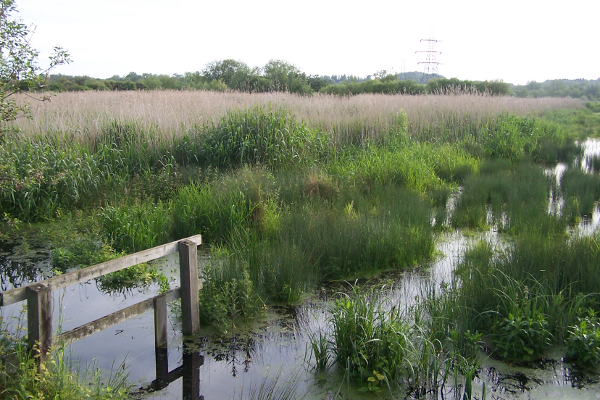Observations

March – April 2019
Following a mild winter and record temperatures recorded at the end of February the weather became unseasonably cold and dry for most of the period with only a few warm days over Easter providing some relief.
The period was most notable for the arrival of our 228th species recorded at Rye Meads, a Cattle Egret that was found on the bund of the Scrape in April. This was followed just over a week later by a different individual. This was a widely expected species given that it is increasing sharply in the UK and had already been recorded nearby.
These records followed hot on the heels of our second record of Common Crane which was spotted flying over the site in March.
A male Garganey arrived in April and was joined by a second male a week later, but no female has yet been seen.
The first Little Ringed Plover was seen on 6th April with further individuals seen on four subsequent days.
The Jack Snipe maximum of 14 was discovered whilst drag-netting. Snipe numbers have been low this winter with a maximum of 15. Single Woodcocks were seen on two dates in March, the latter bird being a part of a small but widespread ‘fall’ of this species in the London area that day.
March began and ended with single Black-tailed Godwits, but the best wader record of the year is held by the flock of 116 Bar-tailed Godwits which were photographed for counting purposes as they flew over in April. This is the second largest flock ever recorded in Hertfordshire.
Up to five Redshanks were present, with their behaviour leading us to hope for breeding on site; however all departed for pastures new.
A good period for gulls and terns, with one or two Little Gulls on three dates, a Kittiwake, two Mediterranean Gulls, and records of Yellow-legged Gull on seven dates relating to at least two individual birds.
This is of course the time of year when the last winter visitors depart and summer migrants start to return. The winter brigade included the last Stonechat, Redwings and Fieldfares, all comparatively early, whereas Meadow Pipits lasted to the end of the month. There were also two records of Water Pipit and a nice group of four Bramblings flying over.
With the changing of the guard, the expected first Little Ringed Plover, Common Sandpiper and Common Tern were all duly noted. Our first Cuckoo reported for duty somewhat late in April, and the first Swift at the end of the month. Two Sand Martins at the beginning of March were the earliest at Rye Meads by eleven days, a result no doubt of the hot weather at the end of February.
Five Chiffchaffs in mid March may have been at least partly remaining wintering birds, but 20 a week later were definitely migrants. Similarly two Blackcaps in late March may have been winterers, but by two weeks later a count of 40 were definitely spring arrivals. The rest of the usual warblers arrived in due course.
The last wintering Stonechat just scraped into March, but there were arrivals of a couple of Wheaters and a Whinchat, and there were just two records of Yellow Wagtail.
Best of the rest included a Raven, a Marsh Tit, a Nuthatch and two Treecreepers, and a Mistle Thrush. Three Siskins and two Yellowhammers were noted, and records of up to seven Linnets on 13 dates represented a large increase on recent years.
Finally, the discovery of a pair of Tawny Owls nesting in a Barn Owl box on the bank of the scrape has led to a rash of sightings as the incubating bird was frequently seen snoozing in the sunshine on the ledge outside the nest hole. The local photographers took full advantage and there were some superb pictures posted, such as on the Friends of Rye Meads Facebook page. The chicks were duly ringed.
